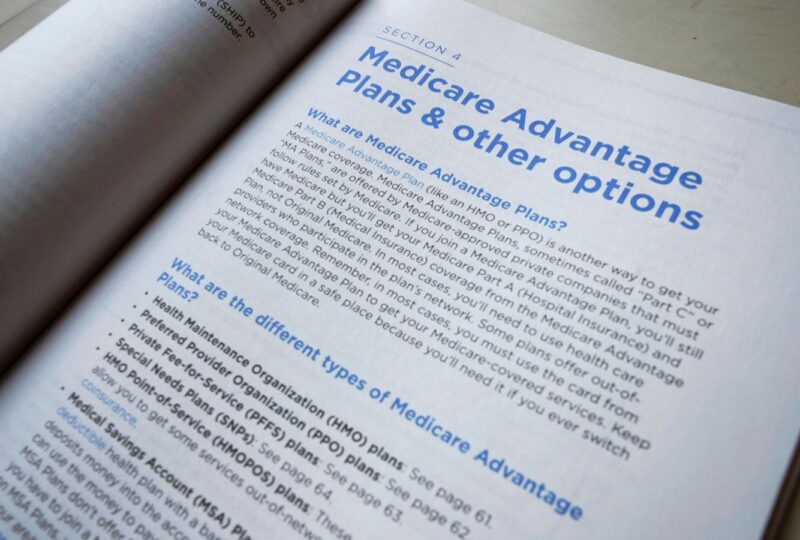Medicare Advantage plans may look different to seniors this year than in past years.
Copyright 2018 The Associated Press. All rights reserved
Open Enrollment is upon us — and across the country, Medicare Advantage (MA) plans are in more flux than usual. Premiums are up, benefits are changing, and members are expected to switch plans at record rates.
Why?
As someone who leads a nonprofit Medicare Advantage plan, I’ve seen the market pressures up close. Here are five reasons the industry is struggling — and why this year’s Open Enrollment period likely feels different to consumers.
1. Medicare Advantage Plan Star Ratings Have Become Harder to Achieve
For more than a decade, the Centers for Medicare & Medicaid Services (CMS) “Star Ratings” program has served as the industry’s north star. These 1-to-5 star ratings are not just symbols of quality — they’re tied directly to plan revenues.
When star ratings drop, bonus payments decline, and so do the resources plans can use to fund benefits and reduce premiums. In some geographies, the difference between 3 Star Revenue can be close to $150.
In recent years, CMS has tightened scoring methodologies, raised performance thresholds, and changed the relative weighting of measures that are difficult to control (like member experience scores). As a result, even historically strong plans are seeing their ratings — and, because ratings are tied to revenues, their margins — fall.
For Medicare beneficiaries, that can mean fewer benefits and narrower networks. For plans, it’s a fight to maintain quality and affordability amid a moving target.
2. A New CMS Payment Model Is Compressing Revenues
CMS recently completed a three-year phase-in of the v28 risk adjustment model, which recalibrates how plans are paid based on the health status of their members.
The goal: to ensure more accurate payments and reduce gaming by which doctors and health plans aggressively documented codes that might not be truly correlated with her costs.
The result: significant revenue compression, especially for plans that had invested heavily in coding and care management infrastructure.
In some geographies, the shift has produced payment reductions exceeding 20% for both plans and the provider groups that serve their members. While the intention may be to make payments more equitable, the real-world effect is that many plans are being forced to cut benefits or absorb losses just to stay competitive.
3. Seniors Are Sicker and Using More Care
Across the industry, medical utilization is higher than expected. Seniors are presenting with more complex conditions — often deferring care during the pandemic — and are now accessing care at rates above actuarial estimates.
Hospital admissions, skilled nursing stays, behavioral health visits, and high-cost specialty drugs are all higher than expected. For plans, these costs are largely unavoidable.
The math is simple: when utilization increases but payments are flat or declining, margins disappear. Many actuaries and CFOs underestimated just how much pent-up demand would persist in 2024 and 2025. The result has been a painful recalibration of what “normal” looks like—and many managed care companies are choosing to leave Medicare Advantage altogether, pushing seniors to find new plans this annual enrollment period.
4. Supplemental Benefits Have Become a Double-Edged Sword
Over the past decade, supplemental benefits — things like dental, vision, hearing, grocery allowances, and Part B cash rebates — have become the marketing centerpiece of Medicare Advantage.
These benefits help drive enrollment, but they also cost real dollars. Many plans have overextended, offering richer benefits to compete for new members without fully accounting for how expensive those programs have become.
Dental benefits, in particular, have proven costly, as utilization has skyrocketed and provider networks have demanded higher reimbursement rates.
What was once a differentiator is now a financial drag. As plans face tighter margins, there is a clear pullback in the generosity of these offerings — leading many seniors to rethink their plan choices as active shoppers this fall.
5. Hospitals and Doctors Are Ambivalent
Finally, the healthcare landscape is shifting. Medical groups that once eagerly entered into Medicare Advantage risk-based contracts are now facing declining revenues and higher utilization and face significant utilization management from plans. Many are demanding higher rates or exiting contracts altogether.
Plans are being forced to make difficult trade-offs: either pay providers more (and pass costs onto members) or risk losing access to key networks. Some provider groups are even “rationalizing” — selectively terminating relationships with plans they view as financially unsustainable.
The tension between plans and providers — both squeezed by the same economic forces — is creating instability in local markets.
The Bottom Line
Medicare Advantage remains one of the largest public-private partnerships in American healthcare — covering more than 33 million seniors nationwide. But success has bred complexity.
Today, plans are navigating higher medical costs, lower revenues, and a tightening regulatory environment — all while trying to keep premiums affordable and benefits robust.
For consumers, it’s more important than ever to shop carefully during Open Enrollment. For policymakers, it’s a reminder that financial sustainability and member protection must go hand-in-hand.
And for plan leaders, this is a moment for clear-eyed realism — and renewed commitment to the mission that started it all: helping older adults live their healthiest, most independent lives.









